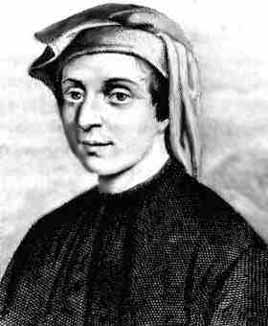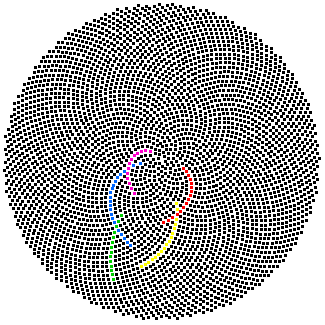

2. Find X (midten) og forlæng den herfra til C
3. Lav cirkelbuen med radius |XC|
4. Forlæng |DC| til den skærer cirkelbuen i punktet F og tegn med dette nye punkt, rektanglet færdigt.


 |
 |
|
1. Tegn et kvadrat 2. Find X (midten) og forlæng den herfra til C 3. Lav cirkelbuen med radius |XC| 4. Forlæng |DC| til den skærer cirkelbuen i punktet F og tegn med dette nye punkt, rektanglet færdigt. |
| Biografi over Fibonacci En anden biografi | |
| Links | |
 |
 |
| En hjemmeside med både historisk, matematisk og små modeller | |
| Per Nørgård - Det gyldne snit i natur og musik | |
| Sammenhængen mellem fibonaccitallene, det gyldne snit, det gyldne rektangel og den logaritmiske spiral. | Sjov grafik, ikke meget matematik |
| Hjemmeside om Fibonacci-tallenes historie og om forskellige modeller | Omfattende |
| Det gyldnesnit og Fibonacci - lidt interaktivt | |
| MatLex - se nederst | kort introduktion - kaninmodellen lidt anderledes formuleret |
|
|
| Vi tænker os en bakterie, der kan leve i 2 timer. I den
første time er den "ung" og får 1 efterkommer. I den anden er den "gammel",
får 1 efterkommer og dør. Vi begynder med 1 gammel. Efter 1 time er den død, men erstattet af 1 ung. Efter yderligere 1 time har den ynglet og er blevet gammel. Ydeligere 1 time senere har vi 2 unge og 1 gammel. Time for time ser det således ud: 1g = 1, 1u = 1, 1g + 1u = 2, 2u + 1g = 3, 3u + 2g = 5, o.s.v.
|
|||||||||||||
| The original problem that Fibonacci investigated (in the
year 1202) was about how fast rabbits could breed in ideal circumstances.
Suppose a newly-born pair of rabbits, one male, one female, are put in a field. Rabbits are able to mate at the age of one month so that at the end of its second month a female can produce another pair of rabbits. Suppose that our rabbits never die and that the female always produces one new pair (one male, one female) every month from the second month on. The puzzle that Fibonacci posed was... How many pairs will there be in one year?
|
|||||||||||||
Chairs in a row: No Neighbouring TeachersThis time we have n chairs in a row and a roomful of people. If you've ever been to a gathering where there are teachers present, you
will know they always talk about their school/college (boring!). So
we will insist that no two teachers should sit next to each other
along a row of seats and count how many ways we can seat n people, if
some are teachers
You can write the sequences using T for Teacher and N for
There will always be a Fibonacci number of sequences for a given number
of chairs, if no two teachers
|
|||||||||||||
Non-neighbour GroupsHow often have the list of names in your class been read out in
alphabetical order, or you have been asked to line up in alphabetical order
for a fire-practice or when the results of a test are given out? The trouble
with this is that you are always next to the same one or two people that are
on either side of you in the alphabetical order - your alphabetical
neighbours. You will have got to know them quite well over the course of
a year, so this puzzle is about meeting other people who are not your
alphabetical neighbours. For instance, if there are 3 people in the class, let's label them according to their position when in the alphabetical order, so they are 1, 2 and 3.
The puzzle is to select a group from the class
with no pair of successive numbers (positions) in the group.
All the possible groups of non-neighbours are:
{1,3} {1}
{2} {3}
{}
Did you notice that the group {} with nobody in it is a non-neighbour group too? So from a class of 3 people, there are 5 ways to pick a group consisting solely of non-neighbours. How many are there in a class of size 4? or 5? or 6? Why?
|
|||||||||||||